American Optical Company
Scovill Mfg. Co., Proprietors
Front Focus Cone
View
Camera Variation 4.0
Front Focus Reversible Back View Camera
Variation 4.0
St. Louis
View
Camera Variation 4.0
4 x 5 with an unused lens board and mint wood finish, although the edges
of the bellows appear worn, The case is probably an American Optical one,
being similar to other cases occasionally found with American Optical
cameras, such as the 4x5
76 Camera Variation 1.

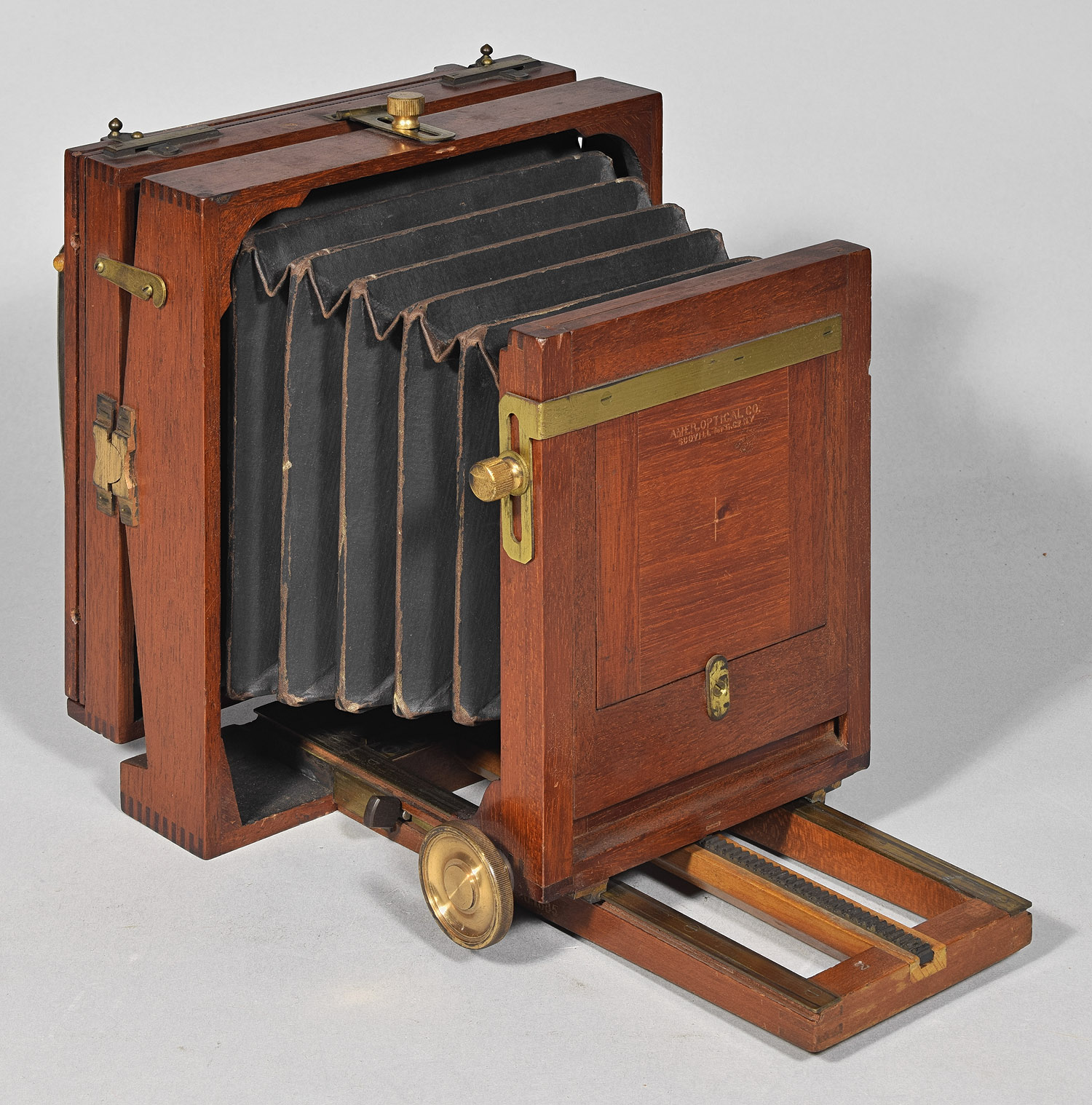
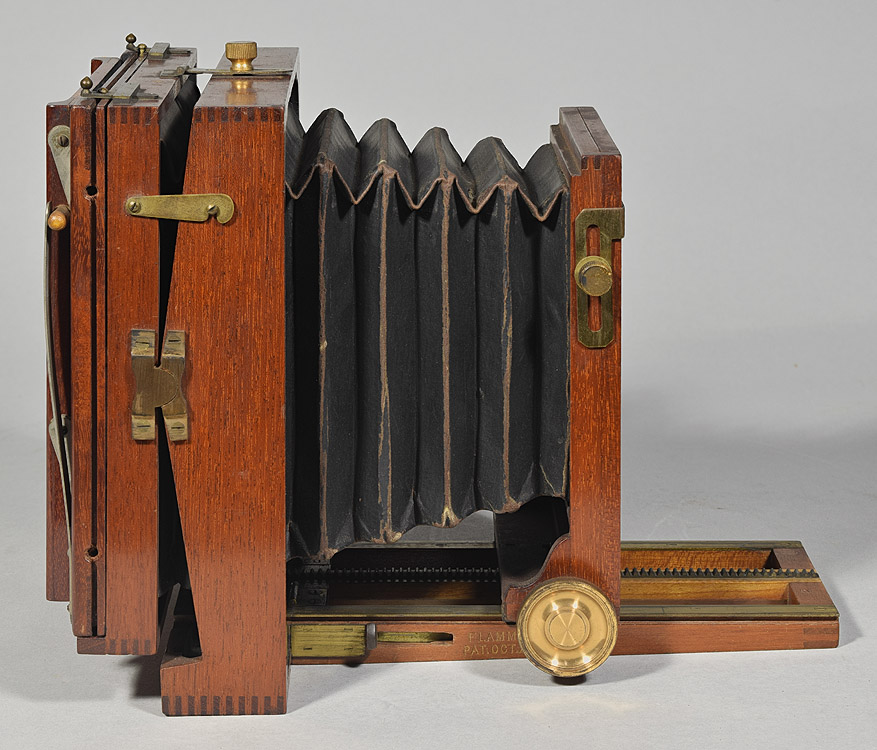
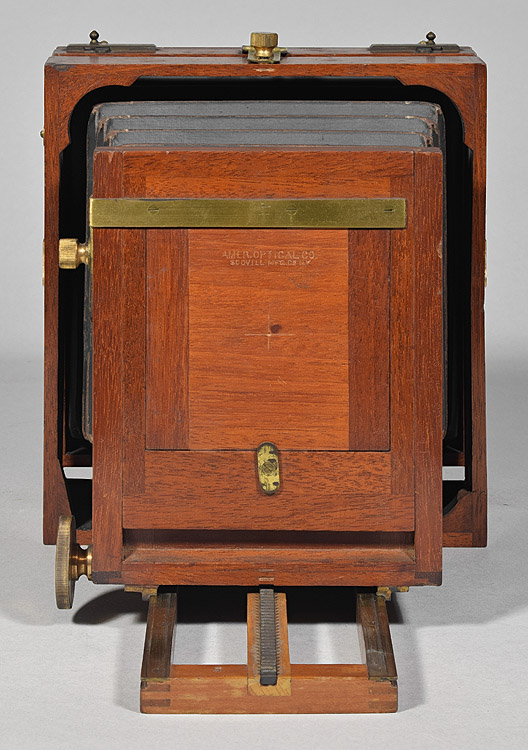

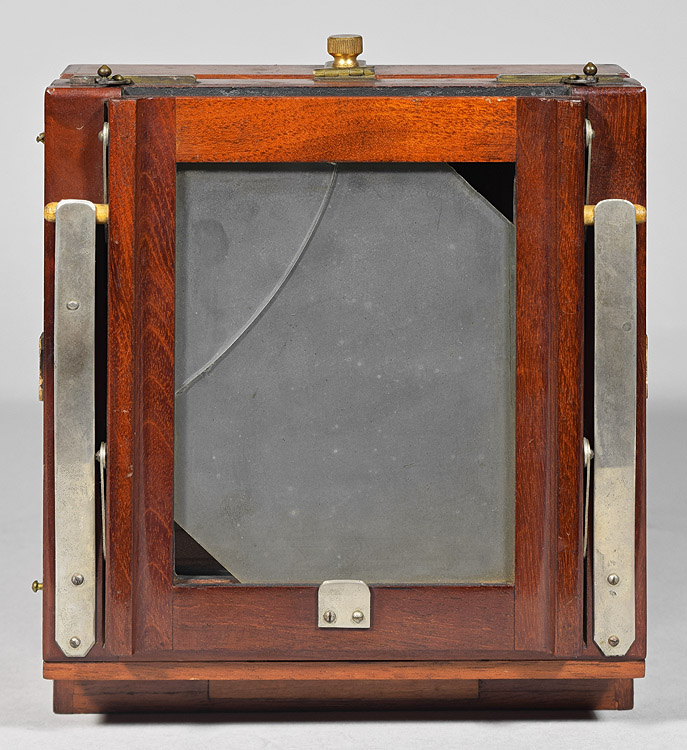
Perspective photo from the rear.
The removable back appears to be a product of the Blair Camera Co., from
its large springs, its center tab that allows the user to easily pull
the back open to insert a holder, and its unique hidden system of ground
glass installation (see
Blair
Combination Camera, Reversible Back, Variation 2.5 and others).
How the Blair back appears to fit exactly and has a wood grain, color
and finish so closely matching the camera is unknown.
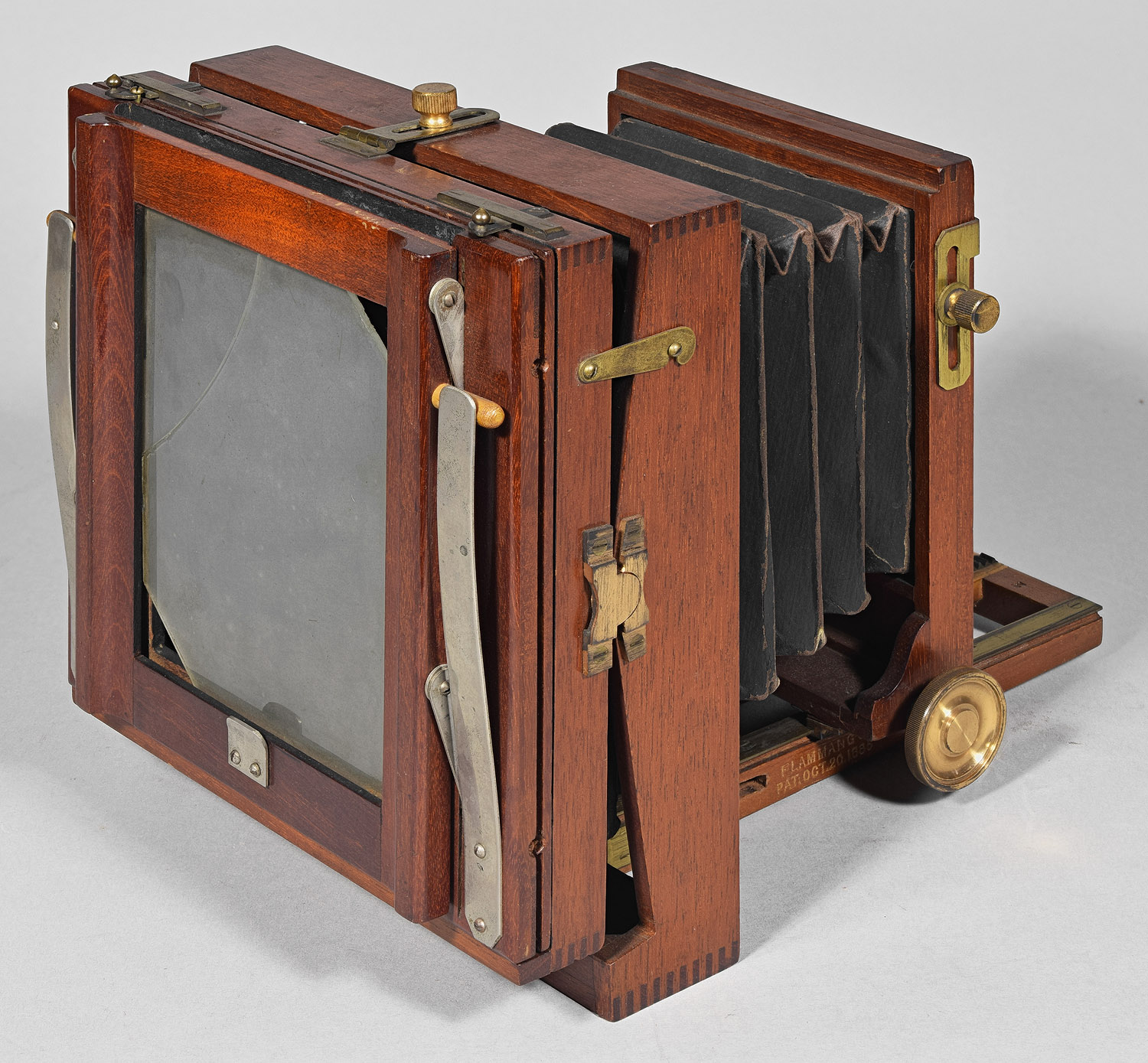
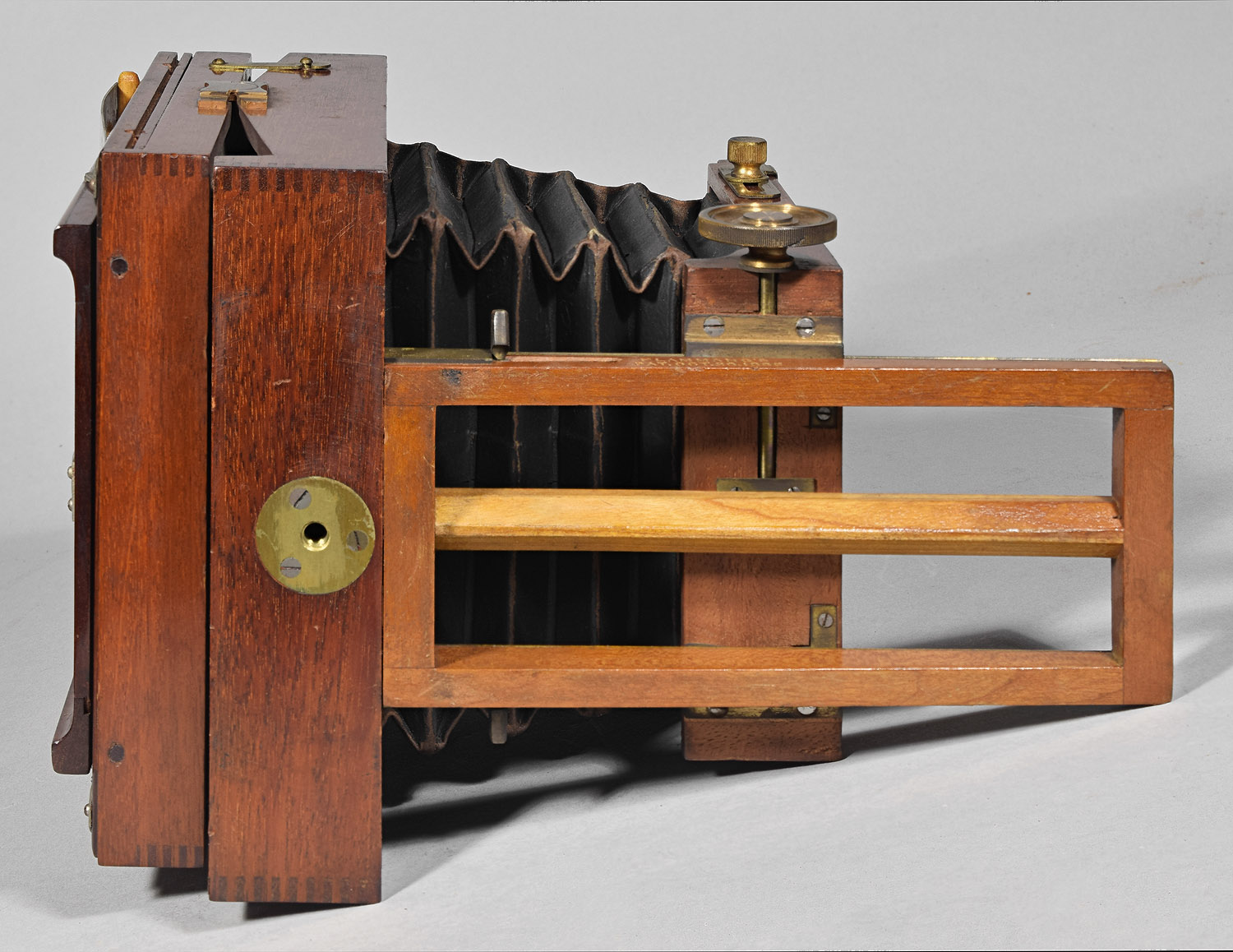
Stamp on lens
board.
The lens board is unused, as is probably the camera. Note that
American Optical has determined the center of the board and marked it
with a center punch.
Stamp on the front of the
platform, assembly no. "2". The lens board has a stamp of "3" on
its back.
American Optical stamped plate
holder: did not come with the camera, but fits its Blair Camera Co.
spring back. Its unusual
slotted sides do not appear to fit any other model of American Optical
or Scovill camera. Stamp of front and back of
the above plate holder
Manufacturer:
American Optical Co. New York, NY factory St. Louis View
Camera:
The St. Louis model is
identical to the
American Optical Flammang's Revolving Back Front Focus Camera, except
that it has a removable and
reversing back rather than a patent revolving back.
When advertised,
engravings for this camera usually
carry a "Scovill" identification
rather than an "American Optical"
identification. Yet many cameras exist, such as the
St. Louis Variation 1 8x10
example,
that are stamped American Optical or have a silver
label marked American Optical. Such AO-marked cameras have
the usual high quality construction and finish
associated with the AO factory. Other examples are
unlabeled, or have a Scovill & Adams Co. label (see
St. Louis Variation 3).
It is possible that St. Lous cameras were made in both the American Optical factory in
New York City (where the high quality and craftsmanship cameras were
made) and the Scovill factory in New Haven, CT (where the less quality
craftsmanship cameras were made).
At least
five variations of the St. Louis exist, based
mainly on the location of the swing (bottom or center of the rear standard) and
style of spring back. The odd thing is that both styles of swing
are found with both styles of backs. It is probable that the
flatter style of back was an improvement (i.e., later) version of the
clunky style of back. But is the bottom swing an improvement over
the center swing? Or vice versa?. In any case, the
distinguishing features of the four variations are: Variation 1.0:
Thick clunky back; single swing is hinged at the bottom of the rear
standard. From the discussion under
Variation 3.0, it would appear that
this thick clunky-type back was made c.1885-c.1889. It appears that all engravings show the bottom swing
pivot. Variation 2.0:
Thick clunky back; single swing is hinged at the center of the rear
standard. From the discussion under
Variation 3.0, it would appear that
this thick clunky-type back was made c.1885-c.1889. Variation
2.1:
Thick clunky back; single swing is hinged at the center of the rear
standard. Identical to
Variation 2.0, except that the wood
throughout is some soft wood, possibly poplar, rather than mahogany.
The example that represents this variation is the only St. Louis camera
ever seen that was not mahogany. That it was made from a
non-hardwood is extremely unusual. Poplar was used only in the
least expensive of Scovill's line, e.g., the
Ne Plus Ultra.
Variation 3.0:
Thin four-spring back; single swing is hinged at the bottom of the rear
standard. From the discussion under
Variation 3, it would appear that
this thin four spring-type back was made c.1889-c.1891. The American Optical/Scovill & Adams
Co. Four Spring Back
Variation 4.0:
Two-spring back, nearly identical to backs made by the Blair Camera Co.
in the 1880's;
a single swing is hinged at the center of the rear standard. The
back on this variation appears to be a design patented by the Blair Camera
Co. in 1884 (US 304,406), in
that it has the following features: two large, one-sided springs screwed
on one end and resting on wooden dowels at the other end, a ground glass
installed in a slot, two wooden corners, each with a hole, at one end of
the ground glass frame, four horizontal plates as hinges for the ground
glass frame, and a metal pull tab to assist in pulling the ground glass
frame upwards. Despite appearing to be
the Blair design, the back matches the wood
grain, color and finish of the remainder of the camera perfectly,
as if the entire camera was manufactured and finished at one time. Also,
the back is unmarked, whereas Blair
camera backs were generally stamped on their interiors with the name of
the company. A similar Blair design back is found on
Variation 4.1. It is
therefore almost certain that
Variation 4.0 and
Variation 4.1
have backs made under the Blair patent, but by the American Optical or
Scovill Mfg. Co. References:
Back to American Optical
Co. / Scovill Mfg. Co. (alphabetical)
Also note, on the strip of brass above the lens board, the three screws
whose slots have been painstakingly tested screw by screw until their
slots lined up before being finished by draw filing (drawing a file
horizontally across the piece until all is smooth).
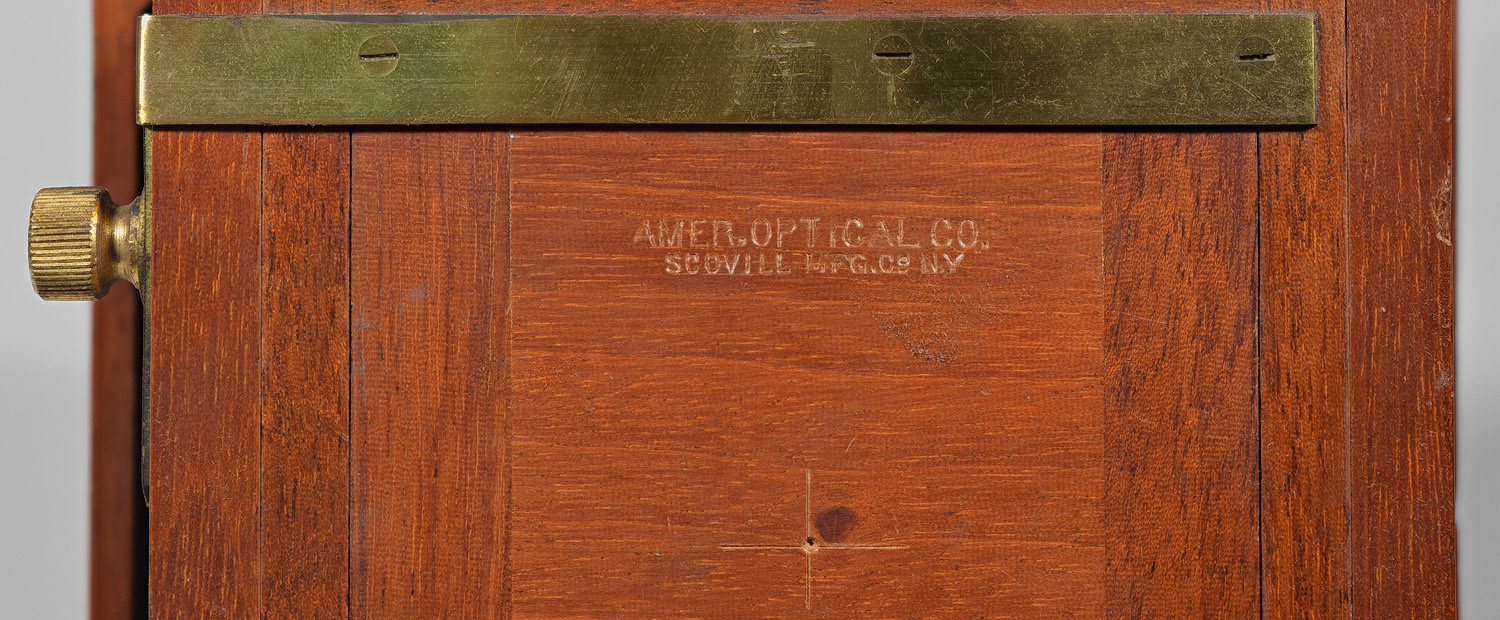
Stamp on both sides of the
platform - the patent
refers to the rod/tube device at the left that makes the bed rigid.


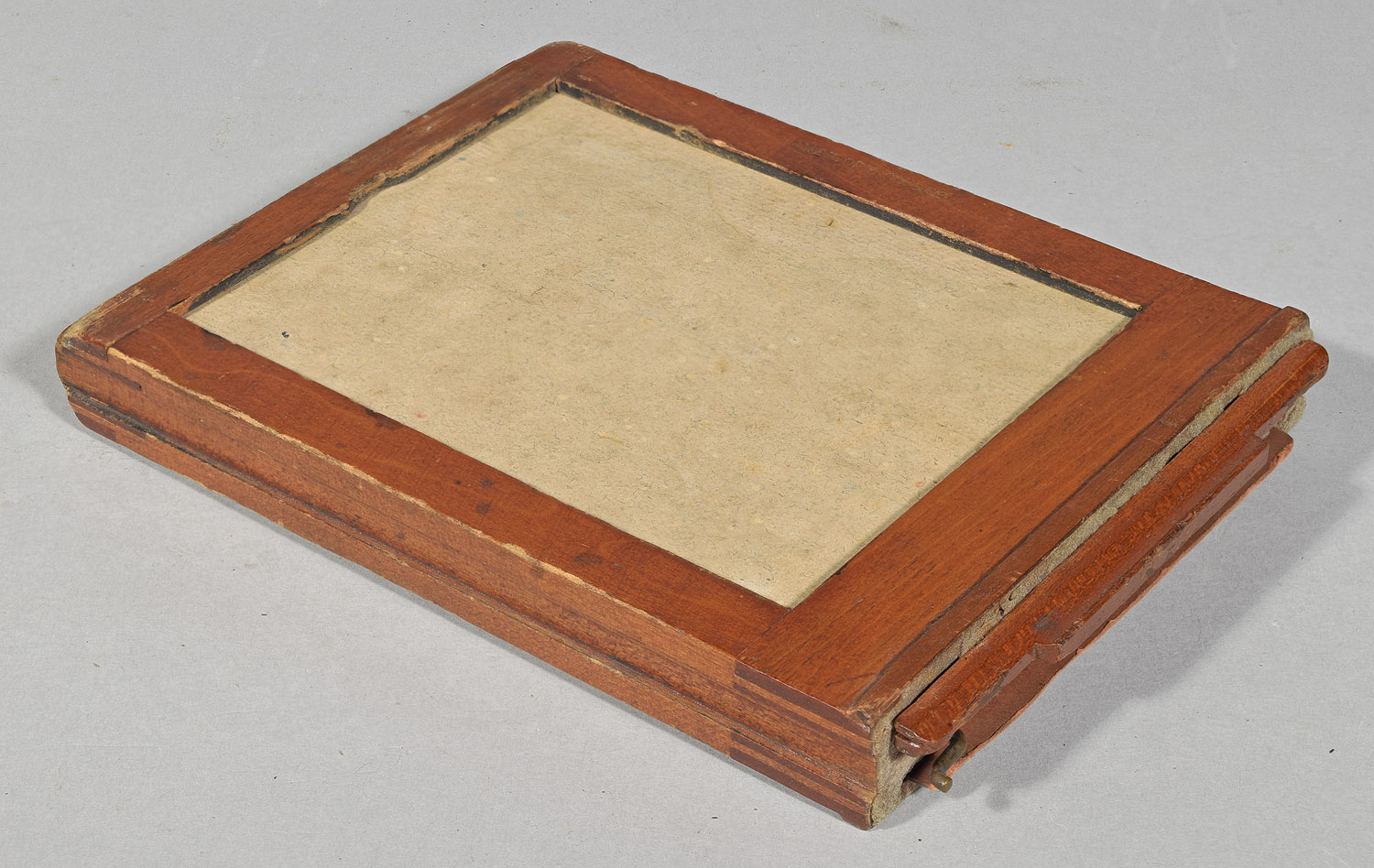
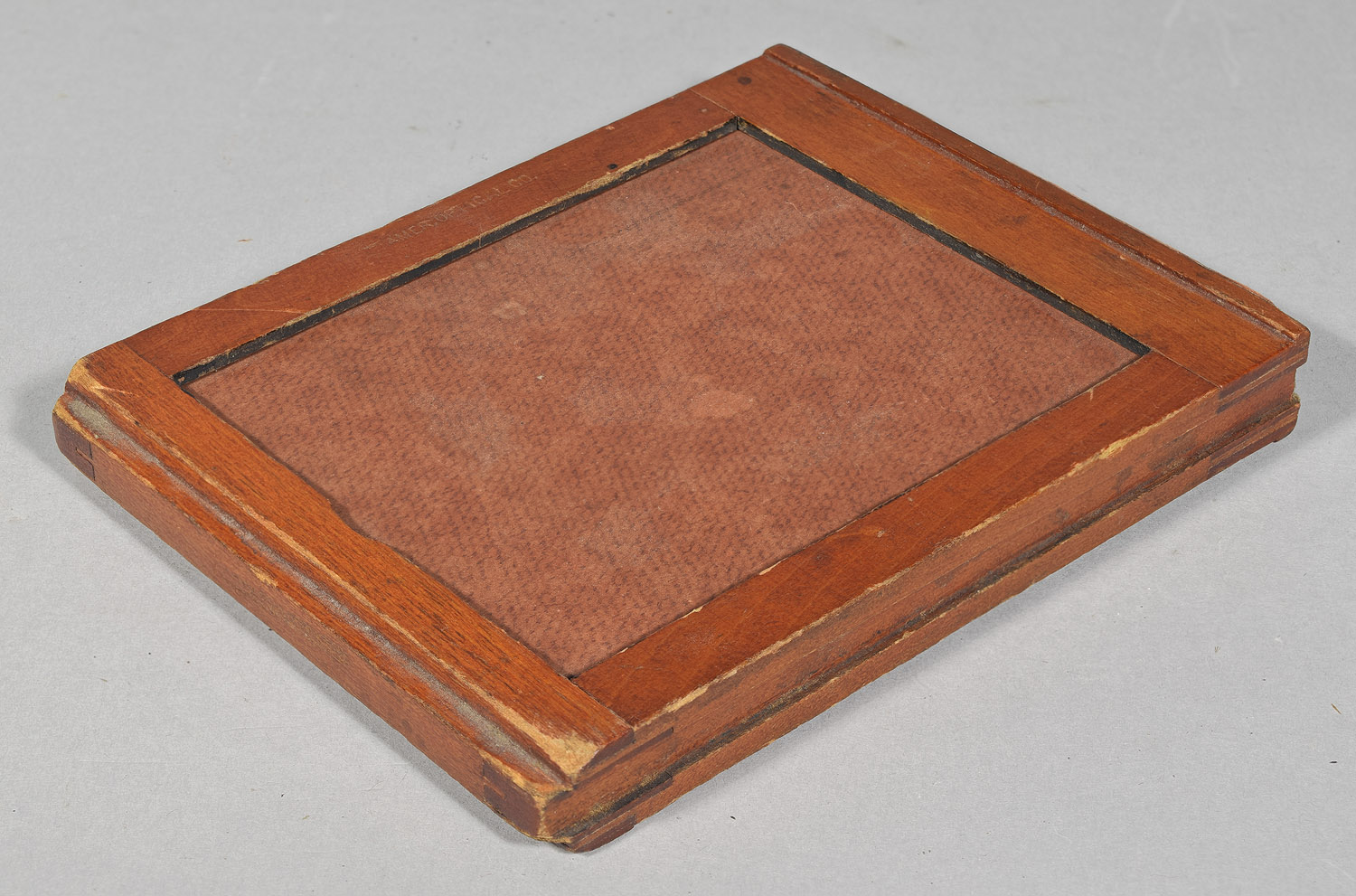

Date Introduced: - ; Years Manufactured: c.1885-
1889
Construction: front focus
via rack and pinion (single gear track on top of middle base rail);
no, single or double swing; reversing by
removable back; three-piece lens board
Materials: mahogany body; cherry base;
black fabric bellows; brass hardware
Sizes Offered: #110: 4x5; #111: 4 ½x5 ½;
#112: 4 ½x6 ½; #113: 5x7; #114: 5x8; #115: 6 ½x8 ½; #117: 8x10;
#118: 11x14
Notes:
This back consists of a ground
glass frame connected to the back of the rear standard using four
springs, one in each corner, and each about 2-3 inches long. As
One end of each spring is tightly screwed to the rear standard, while
the other end applies pressure onto the middle of a hinge made of sheet
brass about 2 inches long, which is attached, one end to the ground
glass and the other to the rear standard, via round-head wood screws
long enough to act as axles. Three of the corners appear as in the
left hand photo below. The fourth corner contains the spring, but
also an extra bit of hardware attached to the sheet brass that catches
in an open position on a post. This is shown in the right hand
photo below.
This type back found on a number of cameras in this
collection, including: A similar back is found on the 1)
Scovill & Adams labeled
Acme Reversible Back View Camera Variation 3, 2)
unlabeled
Albion Variation 3, 3)
American Optical, Scovill & Adams Co., Prop'rs
labeled Compact View Variation 2 or Irving View Variation 2,
4) American Optical,
Scovill & Adams Co., Prop'rs labeled Irving View Variation 1.(known
to have been introduced in March, 1892), 5)
Scovill & Adams labeled
St. Louis View Camera Variation 3, and 6)
Star View Camera
(introduced 1890) - one example labeled
The Scovill & Adams Co., the other example labeled
American Optical Co., Scovill & Adams Co.,
Prop'rs).
From the example cameras from six models that have four
spring backs, we find that all but one camera (and that one is unlabeled
and so indeterminate) are labeled and thus can be dated from when
The Scovill & Adams Co. were
proprietors of the
American Optical Co.,
that is, 1889-c.1899. It would therefore appear that the four
spring back was introduced approximately when
Scovill Mfg. Co. changed to
The Scovill & Adams Co. in
1889. The four spring design was patented in
1889 (granted to Scovill Mfg. Co. (W.H. Fuller, assignor), #407587, 23
Jul 1889), but, unlike most of their patents, the patent information is
not stamped into the wood or otherwise appear on cameras using the
patent.
That the St. Louis
Variation 3 has this four spring back, it represents a
chronologically later version than
Variation 1 and Variation 2,
which have the clunky spring back.
